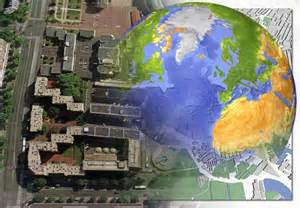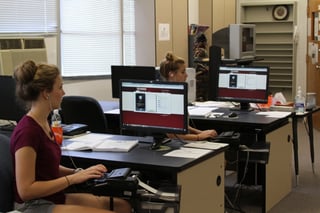


What do you want to be when you grow up? Like any important decision, you must first decide whether or not a career field it is the right choice for you. You must learn more about yourself and find out if you are capable of fulfilling the tasks of a job. Often time, creative people never really grow up; there is always a little part of them that likes to dream that anything is possible. Creative people insist on doing something fascinating, meaningful, challenging and enjoyable for a living. Let’s do some research on graphic design and see if we can learn a little more about what they do.
- Do you enjoy being creative? The designs you create must be original, imaginative and appeal to your clients.
- Can you think on your feet? You must be able to discuss your designs with clients and customers.
- Are you pop-culture savvy? This will be a must in producing publications, websites and other products.
- Are you a self-starter? Whether self-employed or employed by a graphic design firm, it is important that you possess time-management skills.
- Can you work with others as well as yourself? Teamwork is a must in this profession whether it is with other graphic designers, marketers etc.
If you answered yes to these questions, then the Graphic Design Technology program at Hinds Community College might just be the program for you! The program is designed to prepare individuals to engage in entry-level employment and advancement in the field of graphic design, emphasizing digital technology. Students receive instruction including the design and execution of typography, layouts, professional illustration, color theory, industry specific production, digital imaging, and logo design. Also covered are design principles necessary for publication design, mass distribution and other forms of visual communications such as ads in magazines and newspapers, book cover designs, posters, billboards, brochures, letterhead and newsletters.

The Graphic Design Technology’s Macintosh computer lab supports the Adobe Creative Suite software and dedicates many class hours to the learning and use of these creative programs which includeL InDesign, Photoshop, Illustrator, Acrobat Pro, Dreamweaver and Flash.
What Graphic Designers Do?
-
Meet with art director or clients to determine the project
-
Advise clients on strategies to reach a target group
-
Determine the message the design should portray
-
Create images that identify a product or convey a message
-
Develop graphics and visual or audio images for product illustrations, logos, and websites
-
Create designs using computer software packages or by hand
-
Select colors, images, text style, and layout
-
Present the design
-
Incorporate recommended changes into the final design
-
Review designs for errors
Are The Jobs Out There?
According to the Bureau of Labor and Statistics, employment for graphic designers in computer systems design and related services is expected to grow by 61% through 2020. The median wage for persons employed in this field is $16.60 per hour according to Career Coach. Designers will need to be able to create images and designs for print, portable devices, websites and electronic publications with the continuing increase of the use of the Internet for marketing purposes. Employment of graphic designers in more traditional realms is expected to increase by 13% from 2010 to 2020. As technology continues to evolve, graphic designers will need to continually update with the latest software to remain competitive.
Graphic design jobs cover all ends of the creative spectrum but included among the typical jobs filled by students who have completed this program are production artist, junior designer, Photoshop artist, Illustrator artist, t-shirt artist and web designer. All of these positions could include: brand identity design, logo design, cd design, billboard design, ad design and or package design.
Need More Information?
This program is located on the Raymond campus of Hinds Community College. For more information on the GDT program, please contact Beth Messina at 601.857.3318 and/or BKMessina@hindscc.edu.
Also, check out the Hinds Graphic Design on social media:
Graphic Design Technology on Facebook
Graphic Design Technology on Twitter
















